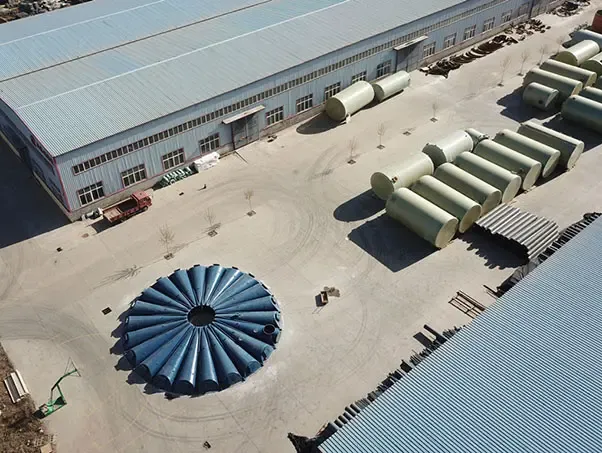
-
 Afrikaans
Afrikaans -
 Albanian
Albanian -
 Amharic
Amharic -
 Arabic
Arabic -
 Armenian
Armenian -
 Azerbaijani
Azerbaijani -
 Basque
Basque -
 Belarusian
Belarusian -
 Bengali
Bengali -
 Bosnian
Bosnian -
 Bulgarian
Bulgarian -
 Catalan
Catalan -
 Cebuano
Cebuano -
 China
China -
 China (Taiwan)
China (Taiwan) -
 Corsican
Corsican -
 Croatian
Croatian -
 Czech
Czech -
 Danish
Danish -
 Dutch
Dutch -
 English
English -
 Esperanto
Esperanto -
 Estonian
Estonian -
 Finnish
Finnish -
 French
French -
 Frisian
Frisian -
 Galician
Galician -
 Georgian
Georgian -
 German
German -
 Greek
Greek -
 Gujarati
Gujarati -
 Haitian Creole
Haitian Creole -
 hausa
hausa -
 hawaiian
hawaiian -
 Hebrew
Hebrew -
 Hindi
Hindi -
 Miao
Miao -
 Hungarian
Hungarian -
 Icelandic
Icelandic -
 igbo
igbo -
 Indonesian
Indonesian -
 irish
irish -
 Italian
Italian -
 Japanese
Japanese -
 Javanese
Javanese -
 Kannada
Kannada -
 kazakh
kazakh -
 Khmer
Khmer -
 Rwandese
Rwandese -
 Korean
Korean -
 Kurdish
Kurdish -
 Kyrgyz
Kyrgyz -
 Lao
Lao -
 Latin
Latin -
 Latvian
Latvian -
 Lithuanian
Lithuanian -
 Luxembourgish
Luxembourgish -
 Macedonian
Macedonian -
 Malgashi
Malgashi -
 Malay
Malay -
 Malayalam
Malayalam -
 Maltese
Maltese -
 Maori
Maori -
 Marathi
Marathi -
 Mongolian
Mongolian -
 Myanmar
Myanmar -
 Nepali
Nepali -
 Norwegian
Norwegian -
 Norwegian
Norwegian -
 Occitan
Occitan -
 Pashto
Pashto -
 Persian
Persian -
 Polish
Polish -
 Portuguese
Portuguese -
 Punjabi
Punjabi -
 Romanian
Romanian -
 Russian
Russian -
 Samoan
Samoan -
 Scottish Gaelic
Scottish Gaelic -
 Serbian
Serbian -
 Sesotho
Sesotho -
 Shona
Shona -
 Sindhi
Sindhi -
 Sinhala
Sinhala -
 Slovak
Slovak -
 Slovenian
Slovenian -
 Somali
Somali -
 Spanish
Spanish -
 Sundanese
Sundanese -
 Swahili
Swahili -
 Swedish
Swedish -
 Tagalog
Tagalog -
 Tajik
Tajik -
 Tamil
Tamil -
 Tatar
Tatar -
 Telugu
Telugu -
 Thai
Thai -
 Turkish
Turkish -
 Turkmen
Turkmen -
 Ukrainian
Ukrainian -
 Urdu
Urdu -
 Uighur
Uighur -
 Uzbek
Uzbek -
 Vietnamese
Vietnamese -
 Welsh
Welsh -
 Bantu
Bantu -
 Yiddish
Yiddish -
 Yoruba
Yoruba -
 Zulu
Zulu
Innovative Solutions for Enhanced Water Clarity Using FRP Clarifier Technology
Understanding FRP Clarifiers An Innovative Solution for Water Treatment
In the realm of water treatment, the need for efficient, durable, and cost-effective solutions is paramount. One technology that has gained significant traction in recent years is the Fiberglass Reinforced Plastic (FRP) clarifier. This innovative solution combines the strength of fiberglass with the functional design of clarifying tanks, resulting in a product that is both resilient and effective in removing suspended solids from water. This article explores the components, benefits, and applications of FRP clarifiers.
What is an FRP Clarifier?
An FRP clarifier is a type of sedimentation tank used in water treatment facilities to separate suspended solids from liquids. It employs the principles of gravity and sedimentation to achieve this separation. The clarifier typically consists of a large tank made from fiberglass-reinforced plastic, which is known for its lightweight, corrosion-resistant, and durable nature. These tanks are designed to withstand various environmental conditions, making them ideal for both municipal and industrial applications.
The functioning of an FRP clarifier involves the inflow of water containing suspended solids into the tank. As the water enters, the velocity decreases, allowing solids to settle at the bottom. This settled material, known as sludge, can then be removed periodically, while the clarified water exits the tank from the top.
Advantages of FRP Clarifiers
1. Corrosion Resistance One of the most significant advantages of FRP clarifiers is their resistance to corrosion. Unlike traditional concrete or steel tanks, fiberglass does not corrode when exposed to harsh chemicals or acidic environments. This longevity leads to reduced maintenance costs and an extended lifespan.
2. Lightweight and Easy to Install The lightweight nature of FRP facilitates easy transportation and installation. Compared to traditional materials, FRP clarifiers require less structural support, allowing for simpler installation processes and lower labor costs.
3. Customizable Design FRP clarifiers can be tailored to fit specific needs and operational requirements. They can be designed in various sizes and shapes, allowing for flexibility in installation based on available space and desired capacity.
4. Cost-Effective Although the initial investment may be higher compared to conventional materials, the long-term savings associated with durability, maintenance, and operational efficiency make FRP clarifiers a cost-effective solution over time.
frp clarifier

5. Thermal Insulation FRP materials have excellent thermal insulating properties, which can be beneficial in maintaining optimal temperatures for biological processes that often occur in water treatment.
Applications of FRP Clarifiers
FRP clarifiers find applications in a wide range of industries, including
- Municipal Wastewater Treatment These clarifiers are commonly used in municipal wastewater treatment plants to remove solids before effluent discharge, thus helping to meet environmental regulations.
- Industrial Wastewater Treatment Industries such as food processing, pharmaceuticals, and manufacturing utilize FRP clarifiers to treat wastewater, ensuring compliance with health and safety standards.
- Stormwater Management In urban areas, FRP clarifiers are employed to manage stormwater runoff, minimizing sediment and pollutants entering natural water bodies.
- Mining Operations In the mining industry, FRP clarifiers can be used to treat water that has come into contact with minerals, helping to reduce environmental impact.
- Aquaculture As aquaculture continues to grow, FRP clarifiers help in maintaining the quality of water in fish farming operations, facilitating a healthier environment for aquatic life.
Conclusion
FRP clarifiers represent a significant advancement in the water treatment sector, offering a range of benefits that traditional materials cannot match. Their corrosion resistance, lightweight nature, and customizable designs make them suitable for a variety of applications, from municipal wastewater treatment to industrial processes. As water treatment demands continue to rise globally, the adoption of innovative solutions like FRP clarifiers will undoubtedly play a crucial role in ensuring clean and safe water for future generations. Investing in such technologies not only improves operational efficiency but also contributes to environmental sustainability, thereby reflecting a commitment to better water management practices.









